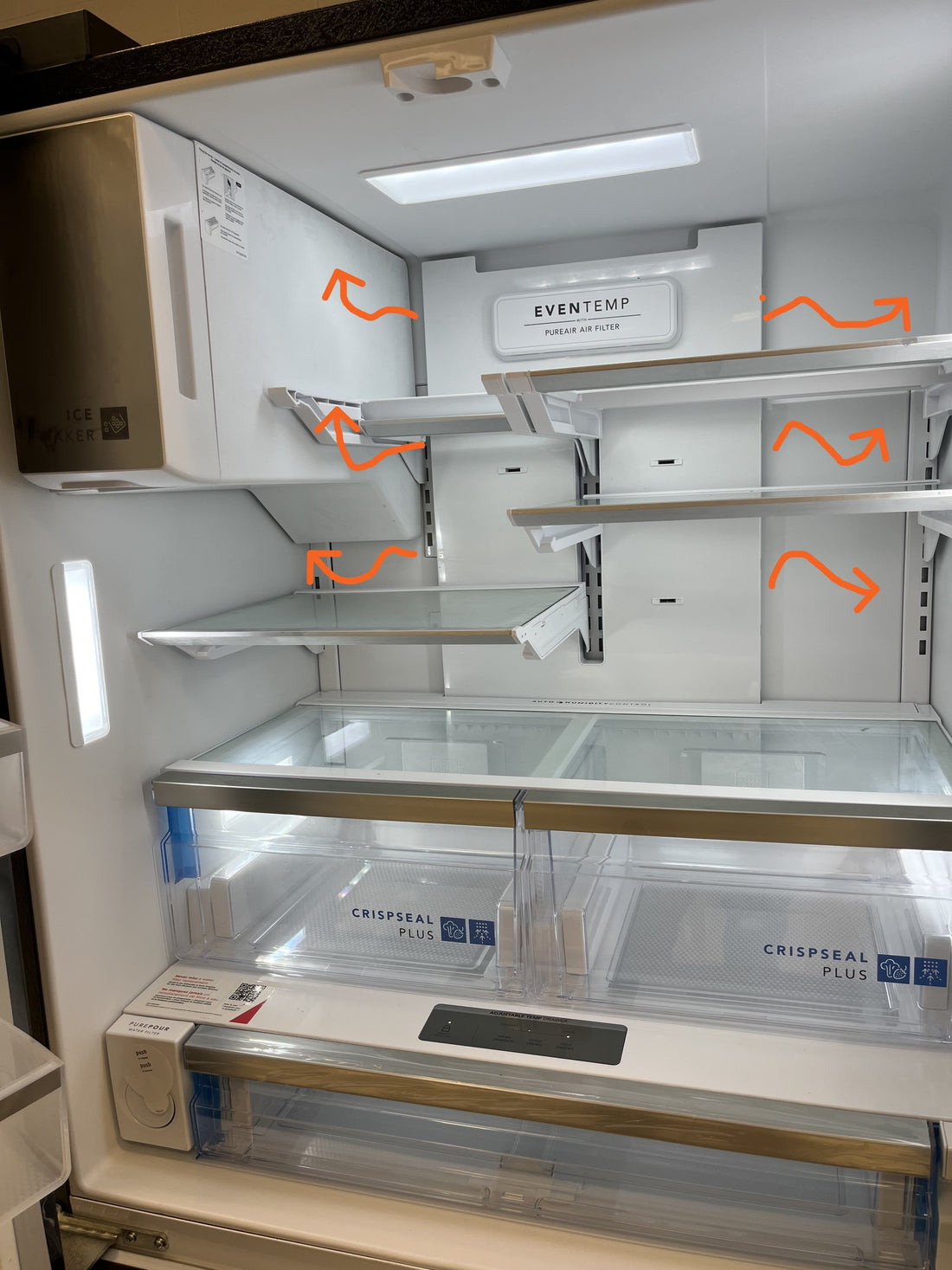
How to Fix a Refrigerator That’s Running Too Warm: Key Parts to Check
Share
Is your refrigerator warmer than it should be? If your food is spoiling too quickly or your drinks aren’t staying cold, there’s a good chance one or more internal components aren’t doing their job. The good news? Most of these issues can be diagnosed and fixed with a bit of guidance and the right replacement parts.
Here’s a breakdown of the most common causes—and how you can get your fridge cooling properly again.
🔎 Symptoms of a Warm Refrigerator
-
Interior temperature consistently above 40°F
-
Spoiled or soft food, especially dairy and meats
-
Freezer seems fine but fridge is warm
-
Motor running longer than usual
🧰 Tools You May Need
-
Screwdriver (Phillips or flathead)
-
Multimeter (for electrical testing)
-
Work gloves
-
Flashlight
🧩 Key Parts to Check and Replace
1. Evaporator Fan Motor
What it does: Circulates cold air from the freezer into the refrigerator section.
What to check: If your freezer is cold but the fridge is warm, the fan motor may have failed.
Fix: Unplug the fridge, remove the freezer panel, and inspect the fan. If it’s not spinning or makes noise, it likely needs replacing.
2. Defrost Timer or Defrost Thermostat
What it does: Controls the defrost cycle to prevent frost buildup on coils.
What to check: Frost buildup in the freezer or blocked air vents can prevent proper airflow.
Fix: If the timer isn’t advancing or the thermostat shows no continuity on a multimeter, replace the faulty part.
3. Temperature Control Thermostat
What it does: Regulates the fridge’s internal temperature.
What to check: If turning the dial doesn’t click or change the compressor behavior, it may be defective.
Fix: Remove and test with a multimeter. Replace if there’s no continuity.
4. Condenser Coils
What it does: Releases heat from the refrigerant as it cycles through the system.
What to check: Dirty coils reduce efficiency and cause warmer temps.
Fix: Clean the coils using a coil brush or vacuum. This simple maintenance step often solves cooling issues.
5. Start Relay (Compressor Relay)
What it does: Helps the compressor start up.
What to check: If the fridge clicks but doesn’t cool, the start relay may be burned out.
Fix: Remove it from the side of the compressor and check for rattling or burnt smell. Replace if faulty.
6. Door Gasket
What it does: Seals cold air inside the fridge.
What to check: Look for cracks, tears, or loose edges.
Fix: Damaged gaskets let warm air in and cold air out. Replace for better efficiency.
⚠️ Bonus Tip:
Always make sure your fridge has proper airflow around it and isn’t packed too tightly inside. Blocked vents can cause uneven temperatures even when all components are working.
🔧 Need Replacement Parts?
From evaporator fan motors to defrost timers, we’ve got everything you need to get your fridge cooling again.
